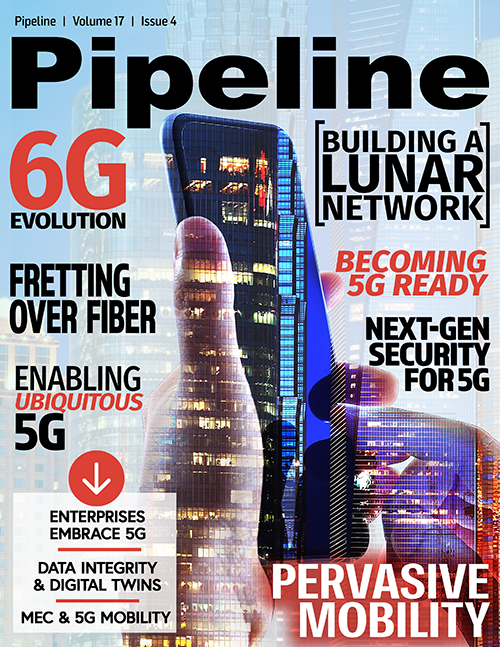The Ultimate Edge: Building a Lunar Network
The provision of advanced end-to-end data communications services between the Earth and the Moon requires access to significant state-of-the-art infrastructure on both the Earth and the Moon, as well as the vast sea of empty space between the two—the Cislunar area. The Earth and near-Earth service areas, such as LEO, MEO, and GEO, are comprised of a broad, global ecosystem of communications infrastructures, including satellites, wireless towers, fiber, ground stations, software management systems, apps, and mobile devices, which together almost achieve data access ubiquity. This is not the case on the Moon, as its communications infrastructure has yet to be built. And, unlike transportation, which operates as a point-to-point service, lunar communications must be point-to-multi-point to permit networking for meaningful data management. Communications also must as open-architected and as ubiquitous as demand and financing permits.
CommStar has also formed a consortium of Earth-based service providers capable of offering to commercial, civil space agencies, and government an end-to-end cloud-based data distribution ecosystem. This Earth-based ecosystem exists today, fully integrated and software-centric. The consortium also intends to be the twenty-first century managed services platform for the future distribution of data for commercial, civil space, and government services on the Earth and to the ultimate edge of cloud networking—the Moon. As a result, this consortium will bring the Moon and the beyond ever closer and useful to those of us on the Earth—not just professionals and scientists but also our children. This capability will open up educational experiences as children and students will actually be able to download an app on the surface or appliance of choice and “manage” their own data, collected by their own experiments. To illustrate, consider the example of a STEM payload resting on the surface of the Moon. This innovation will ultimately bring the Moon closer to us and we to it.
Bridging present and future
For humankind to move beyond landers, pathfinders, and explorer projects, it must design, plan, and build settlements, industrial sites, and security facilities. These permanent communities—for construction, operation, and habitation—will require a significant amount of data services for lunar communications, such as robotics, security, interpersonal, and technical services. They will also serve as a connection to an always-on, always available networking capability interconnected to the Earth’s existing commercial infrastructure. This lunar-to-Earth bi-directional connection will require robust bandwidth—Gbps, not Mbps or Kbps, low latency, streaming HD video, advanced managed services access, and open access to all users.
Without a robust and resilient communications infrastructure on and around the lunar surface, the near-term potential of humankind’s permanence on the Moon will be challenging. Everything we rely on in our daily lives on Earth has something to do with communications. It will be an even more critical requirement on the Moon. In sum, we humans need to communicate.
The further we are dislocated from each other, in our work, commerce, families, and institutions, the more the need becomes more critical. COVID-19 has taught us this lesson. And communications depend heavily on user access to infrastructure, which in turn must be as connected, available, and manageable as possible. This is the underpinning of the networking capability and consortium under development today, to bridge the present and future.


















